MoustachesToys take on the Meze Elite
Should I have stuck to playing pool, or enjoyed this rare gem?
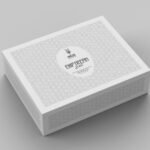
Meze Elite box
On the track “Thursday”, from the album “Cure for Pain”, where I discovered Morphine, Mark Sandman tells a story in which the supposed hero of the narrative used to get together to play pool every Thursday with a girl.
Next they headed to the motel.
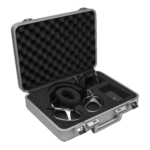
Meze Elite
That day after she asked him to go home with her, he was so nervous, he couldn’t even relax, because he wasn’t sure when her husband could show up.
That one of the neighbors had seen his car parked outside her door and told her he thought he knew him.
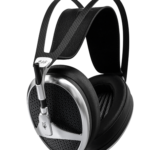
Meze Elite
That her husband was a very violent and jealous man.
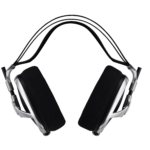
Meze Elite
That now he had to disappear while he could.
In the end, should he have stayed with only playing pool, or enjoyed this rare gem?
My favorite headphones, my favorite ones, the ones that I own, that I paid for with my money, that I love, that make me stomp my feet and wave my arms when I think I’m alone, are the Meze 99 Classics. If I remember correctly I paid three hundred and something euros for them. Yes, I know(!), if an ET landed now and put them on, and asked how much they are worth, I don’t think they would ever get the price right. The price/return ratio is the best I know (I haven’t heard the 109 Pros yet).
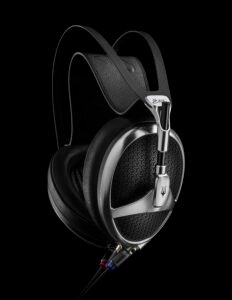
The sound of these headphones reminds me of the sound of “Cure for Pain” by the Massachusetts band. This band consisted of Mark Sandman, voice and bass with 2 strings only, Dana Colley on saxophones and Jerome Deupree on drums, also minimalist, in fact like the sound of the band. Sandman left the land of the living in 1999 during a tour of Italy. Since then, Morphine ceased to be Morphine, as Queen ceased to be Queen, after the death of Freddy Mercury.

Meze Elite
“Cure for Pain” was the first album I heard from the band. The power trio delivered a visceral, honest sound. The monochromatic, almost declaimed voice of Mark Sandman, with his simple bass, straying with Deupree’s drums, complemented by Colley’s saxophones, not always responsible alone for the melody. The sound of this band leaves anyone tapping their feet, like the 99 Classics. My belief that I made a good purchase is unshakable.
In order to test the M2tech rockstar system, I asked JLM for some headphones to do it justice. They sent the Meze Elite. Yes I know. Your favorite (…not the most humble one) writer was at first glad of the opportunity. After all, no other equipment has been dubbed as “perhaps the best in the world” by so many reviewers.
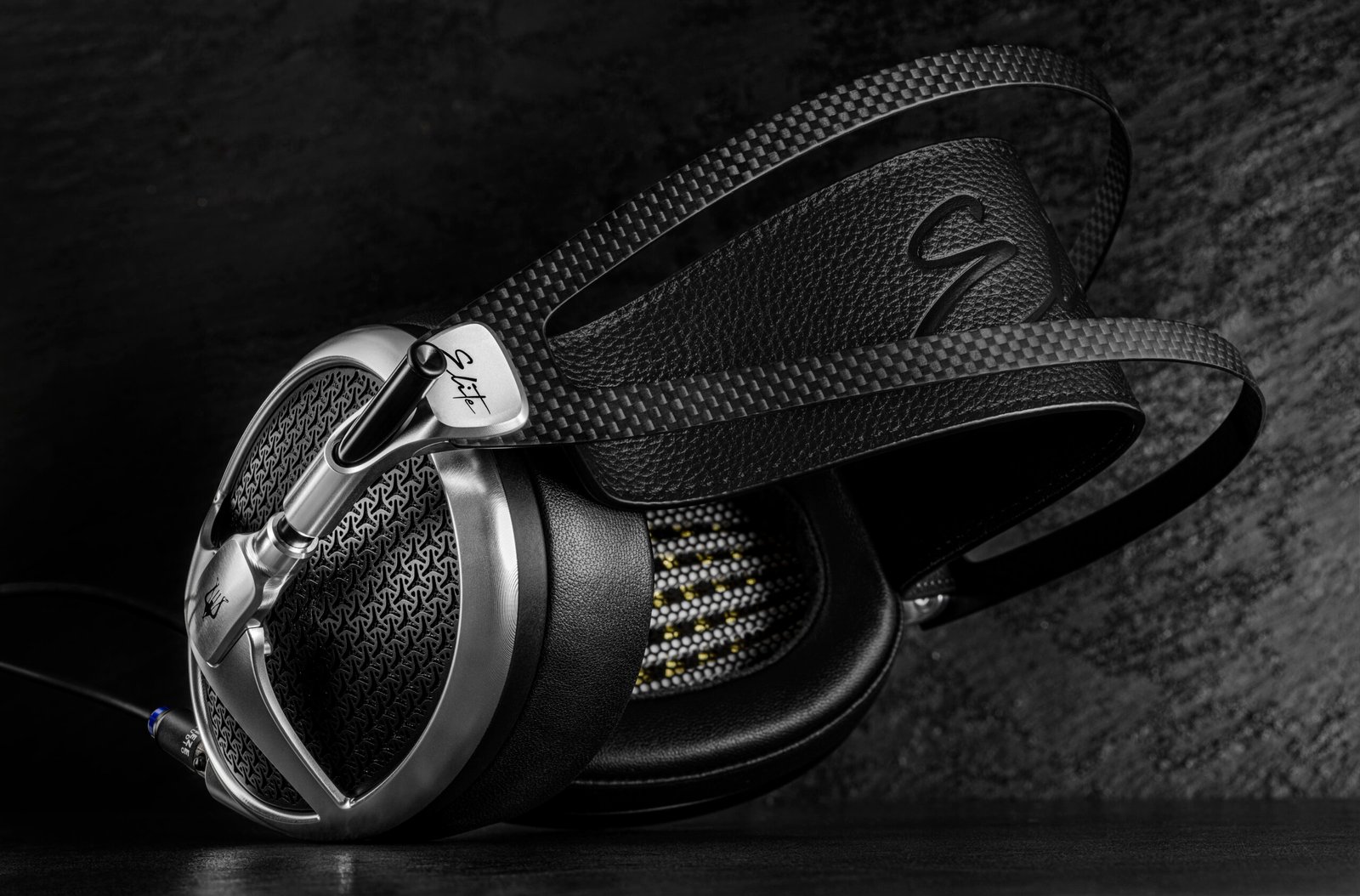
Meze Elite
But I was quickly beset by mixed-feelings. The best headphone in the world, long after being tested by practically all the “experts” in the market, to be reviewed by me too? The most unknown of reviewers in this global village? What could you add that none had already said? The first thing to do to approach responsibility in a way that is untainted by ready-made ideas, and resist any temptation to go look at the opinions of others. No sooner said than done. The first idea, and perhaps the most logical, the obvious reference to design, with parallels with architectural styles. But if you were expecting the logical, the obvious, you wouldn’t be reading my review, would you?
The first impressions:
The headphones arrived in a white cardboard box, with the same pattern that is machined into the chassis, printed in gray on the box and with “Meze audio Empyrean Elite, driver developed exclusively for Meze audio by Rinaro Isodynamics” in the center.
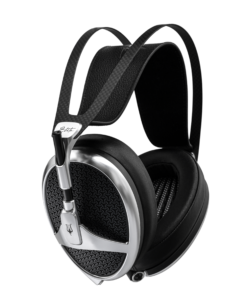
Meze Elite
I open the box and reveal the famous aluminum suitcase, reminiscent of the one that radiated a golden glow from “Pulp Fiction”, remember?
I opened the two locks in parallel and simultaneously, just like in the aforementioned scene from Tarantino’s film, but this time, instead of a golden glow that made one of Vincent Vega’s (John Travolta’s) eyes flutter, inside the padded suitcase sponge like a pistol box, we have a piece of jewelery that plays music that some call Meze Elite headphones, with one of the sets of ear pads already mounted (two are supplied, one pair in genuine leather, the other in alcantara), a high quality, with one end with a 6.3mm jack and on the other side 2 mini XLR plugs, a mini manual and a business card with the serial number and date of the quality inspection. There’s no shortage of grace, as it should be for a product of this price.
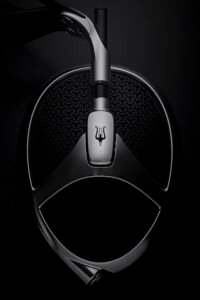
Meze Elite
The headphones themselves (the paraphernalia are such that I have to reserve a portion of the test for them) are truly a piece of jewellery. Let me explain. The exterior structure is in polished silver metal, with a machined black interior, with an Ottoman/Balkan inspired pattern (on these things there will always be an expert who will hastily raise his arm and override me and say: “class D, not digital It’s not the same thing.” I invite the internet to correct me), carbon fiber and leather rim with “Elite” engraved. As I already mentioned the Elite come with 2 different pairs of ear pads. A pair of leather, which to the touch has all the feeling of being real. Vegans can also listen to music with the Elite, with the Alcantara cushions! Jokes aside, Meze thought of two types of comfort, but also two types of sound. Here we go. As for the customer who demands something more than just sound for his 4 thousand euros, Meze got you covered!
Comfort.
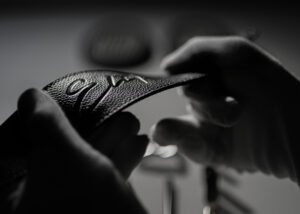
Meze Elite
These Meze, despite the carbon fiber rim and the film manufactured by Rinaro used in the drivers wich weigh less than a gram each, are not exactly light headphones. Next to the 99 Classics they look like father and son. But the weight is evenly distributed across the head by the leather rim. The grip is also very well measured. My experience has been that long listening sessions are possible without any fatigue. My average is to start at 10 pm and finish between 1 and 2 am. Using the Elite I found myself prolonging the auditions into the night.
So what about the sound?
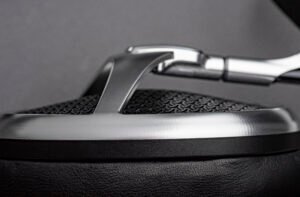
Meze Elite
If we come from dynamic headphones, with good sensitivity like the Classics, in an immediately previous hearing, it is advisable to increase the volume to reach the same sound pressure level, between 4 to 6dB. Although the Elite are relatively easy headphones to drive, perhaps because they are isodynamic, they require a little more effort on the volume knob. On the M2tech Young IV, with the volume at minus forty decibels, listening to Morphine, I measured peaks of 75dB. I usually listen to music in lower volumes, except in critical listening or with classical music, where I get to sound pressure levels of some high-end demo rooms…
The first part of this test refers to the use of leather ear pads, which I used for most of the time that the Elite were here. For strictly personal reasons. Alcantara pillows are neither inferior nor superior, neither in comfort nor in sound quality, they are just different in both aspects. It’s just a matter of personal taste here.
So with the leather earpads:
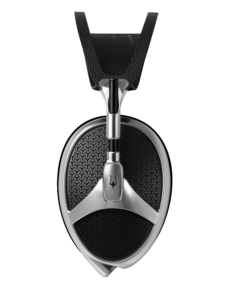
Meze Elite
The commitment that the Elite allow immediately jumps to the ears. Audiophiles will still be able to describe every note and every nuance, but without scratching the musicality sometimes lost along the way. Details are excavated from the music so as not to distract from the music itself. Microdynamics is impressive. The musical context, the texture of each note, especially on basses, which have just the right amount of kick. The timbre sounds realistic. A balance is struck between richness and detail. I also liked the feeling of space that these Meze allow.
In “Sleep Walk” by Marissa Nadler, the reverberation used in the recording, which aims to give the music an ethereal tone, which sometimes becomes annoying on other headphones, here achieves the desired sweetness. The pedalboard, with a bass effect, at the beginning of “Roads” by Portishead, also tiring on some other equipments, here presents itself with a perfect balance between muscle and musicality. Beth Gibbons’ voice is sweet but not cloying. Which in these two recordings is not always easy.

Meze Elite
“Jesus Gonna Be Here” by Tom Waits, “Bone Machine” album. Transients and gaps between instruments are evident. “chestiness”, fits like a glove here in some interpreters like Johnny Cash, singing “One” by U2, played by the Elites.
On Massive Attack’s “Mezzanine” album, “Angel” is another challenge, but here overcome. The basse is precise and muscular, without hurting, and when it comes to the sound mass, the instruments, the machines, and the effects are perfectly distinguishable, without losing context and the intended effect of wall of sound. This is a dark record, which requires some balance from the playback equipment. In “Teardrop”, the balance between detail, the sensation of space and the body of the instruments (or machines) is once again maintained.

Meze Elite
“Both Sides Now” by Joni Mitchell (orchestra version). This song was written by Joni Mitchell as a girl, so that when she as a woman could sing it, this way. This is my version of the story. And I play it when I want to measure the emotional load that the equipment is capable of. It is clear that no equipment is capable of emotional load. A piece of equipment is a set of inert materials. But that can make sounds come to life. Sounds that can move us inside. Clannad’s “In a Lifetime” featuring Bono is another one. The mellow trio is completed with “Your Ghost” by Kristin Hersch featuring Michael Stipe. The Elite’s capabilities are confirmed, an acoustic guitar with the right timbre, deep bass and just-measured transients.
And now the icing on the cake. “Udhero Na” by Arooj Aftab featuring Anoushka Shankar. Wow! Arooj’s voice pierces us, the harp has a perfect brilliance and timbre, and Anoushka Shankar’s zither transports us in a multicolored party, flying over the Ganges.
With the Alcantara earpads?
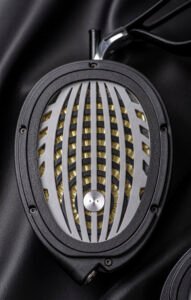
Meze Elite
“The Pros and Cons of Hitch Hiking” by Roger Waters. Here I will take my time. This is a record I recommend on vinyl. Why? Even if it’s just to force you to listen in a row, from end to end. To hear Eric Clapton’s best guitar, and why not, maybe the best RW record. With gems like “Sexual Revolution”, “Go Fishing” and “The Pros and Cons of Hitch Hiking”, the music. At present, some will be tempted to cancel him. To them I won’t say a word. I respect their opinions. Respect his too.
Alcantara. Less bass kick, less context, and more brightness, though perhaps less separation. Even so, I think the experience with leather earpads, in my personal opinion, is superior. We are talking about small differences, test differences. If it were different headphones, the choice would be due to other factors, not the difference in sound quality. It’s nice to be able to change according to each occasion. Alcantara also seemed to me to get a little warmer on prolonged listening.
The elephant remains in the room. But then what about the 4 thousand euros? These headphones are not the only ones sold for prices of this caliber, nor will they be the most expensive available.
The discussion about asking prices for high-fidelity equipment is an issue that I will not discuss this time. Everyone knows whether to spend on FIAT, Mercedes or Ferrari. It is your own choice..
One thing is for sure, habits have changed, many of us will not have the opportunity to really appreciate a good system, of elements, of electronics with a pair of speakers. For many reasons. I tested these Meze with an M2tech Young IV, complete with Van der Graaf power supply, powered by Apple TV and TV set. The value of this combo, including the Meze, is around 8 thousand euros. I invite you to assemble a system, with a sound experience close to the Elite system, plus the M2tech set, but with an amplifier, speakers and cables. And after it all adds up, look how much it could cost.
I know what I’m talking about. With the opportunity to be with the Elites for a while I was given a taste of what they are capable of.
But now they’re gone. The bitterness of the loss remains.
As Sandman, should I stuck with the Thursday afternoon pool, or enjoyed this rare gem?
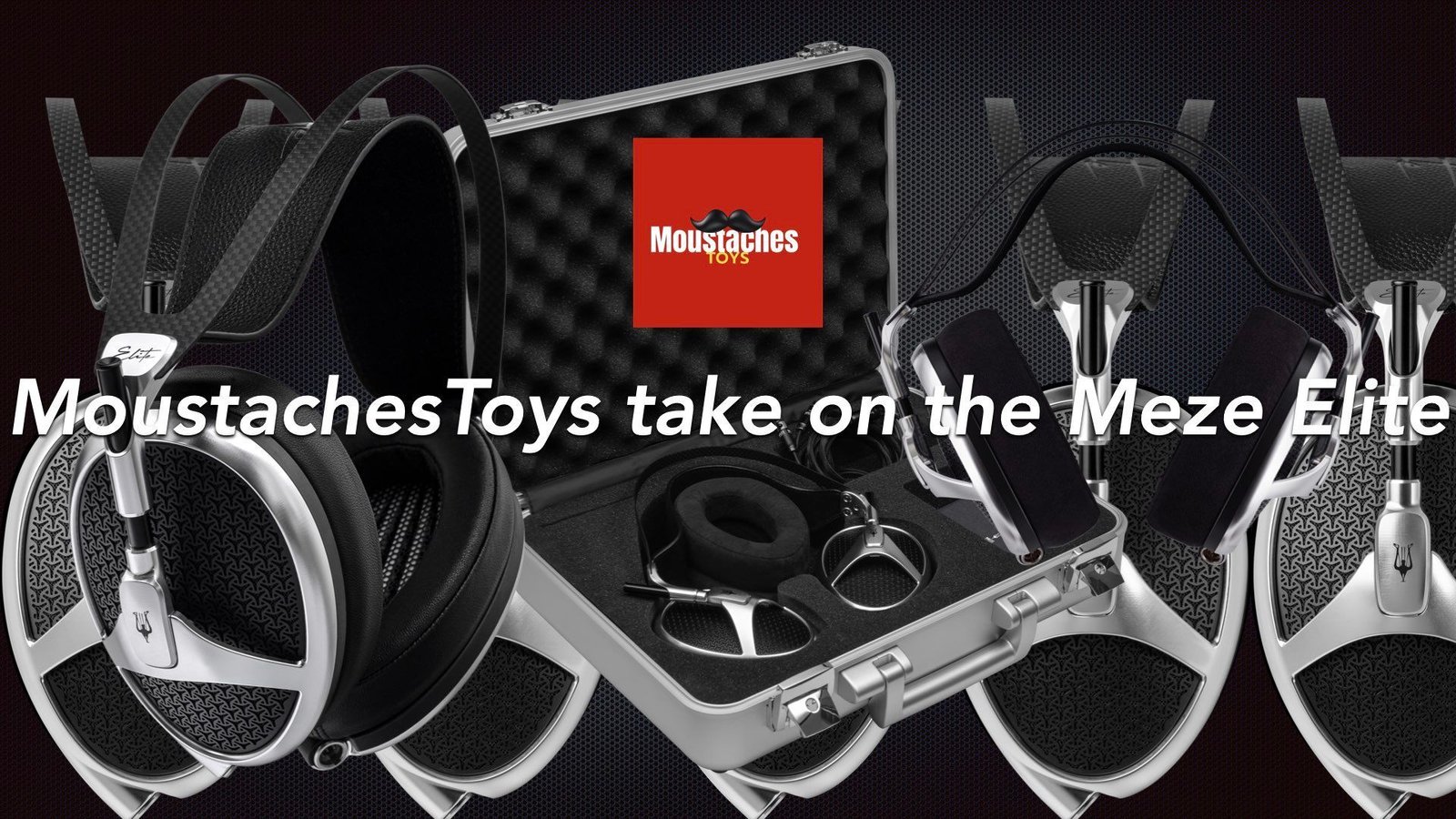 TECHNICAL SPECIFICATIONS
TECHNICAL SPECIFICATIONS
OVERVIEW
Driver Type
Rinaro Isodynamic Hybrid Array®
Operating Principle
Open
Ear Coupling
Circumaural
Frequency Response
3-112.000 Hz
Impedance
32 Ω
Nominal SPL
101 dB (1 mW / 1 kHz)
Maximum SPL
> 130 dB
Total Harmonic Distortion (THD)
<0.05%
Weight
420 g
MEZE DRIVER SPECIFICATIONS
Geometrical Shape
Ovoid
Size
102 mm x 73 mm
Driver Weight
75 g
Casing
Fibreglass reinforced polymer
Diaphragm Type
Rinaro Parus® [MZ3SE]
Active Area
4650 mm2
Diaphragm Weight
0.11 g
Acoustic Mass
7.5 kg/m4
Lower Frequency Limit
3 Hz
Upper-Frequency Limit
112,000 Hz
available in Portugal at:
Equipments in the review:
- Headphones > Meze Elite
- DAC/pré-amplifier/HeadAmp > M2tech Young MkIV
- Power Supply > M2tech Van der Graaf MkII
- Power cable > Furutech Slimline
- digital source > Apple TV 4K + Hisense TV
- digital source > MacBook Air
- USB cable > Ansuz Digitalz
- power distributor > Ansuz Mainz X-TC
- Power cable to the distributor > Ansuz P2
